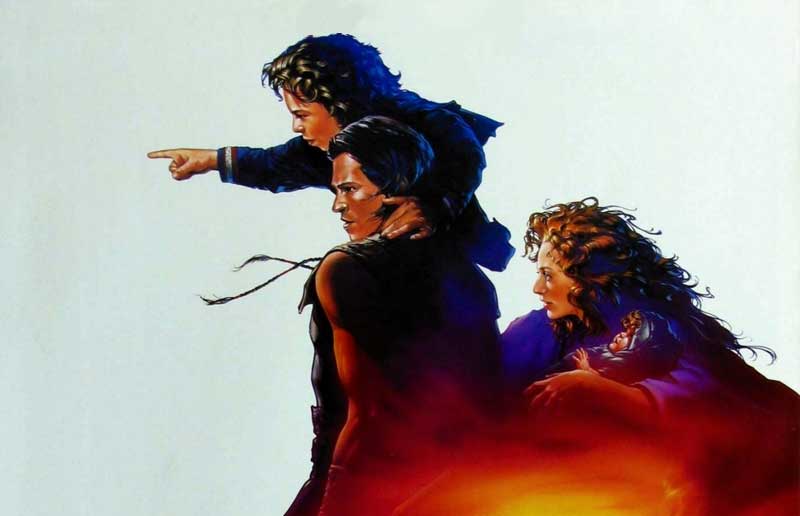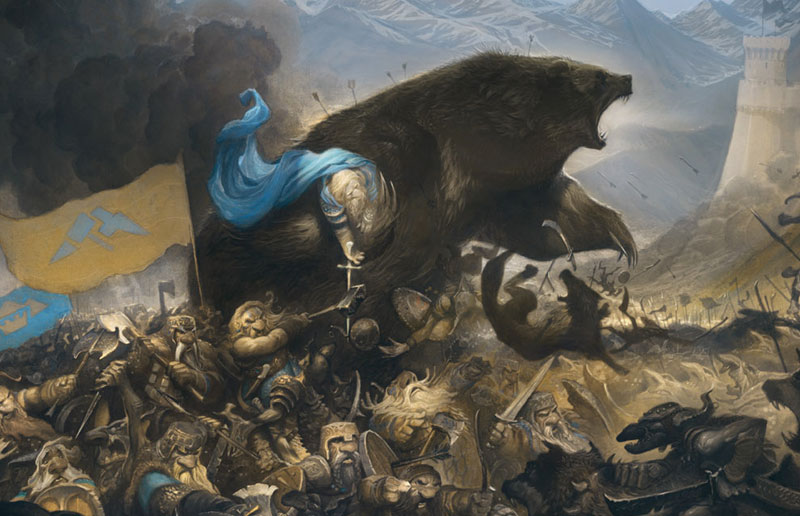El profesor de Oxford todavía tiene muchas historias de la Tierra Media que contar, y la prueba de ello es The Fall of Gondolin, el nuevo libro que verá la luz en inglés el próximo mes de agosto de la mano de HarperCollins y que vendrá a ser un inestimable documento del auge del reino oculto de Gondolin, fundado por los elfos noldor en la Primera Edad, hasta su terrible caída. Es la primera vez que esta historia se publica separadamente, ya que apareció de forma completa por vez primera en El libro de los cuentos perdidos, y más tarde otras versiones más compactas se publicaron en El Silmarillion y en Cuentos inconclusos de Númenor y la Tierra Media.
The Fall of Gondolin se publicará en el mismo formato que hemos visto en Beren y Lúthien, es decir, tapa dura con sobrecubierta e ilustraciones de Alan Lee. El texto ha sido editado y compilado por Christopher Tolkien e incluirá todas las versiones de la historia, con comentarios añadidos de Christopher. El libro tendrá 320 páginas y un precio de 30 $.
La intención de separar The Fall of Gondolin de las antologías donde ha visto la luz es por lo visto hacer que los lectores vean de primera mano cómo ha evolucionado la historia desde que Tolkien la empezara a publicar allá por 1917 ya que se trata de “la verdadera primera historia de este mundo imaginario” y una de las primeras en escribirse en papel.
La historia tiene lugar miles de años antes de El Señor de los Anillos y señala el principio del fin de la Primera Edad de la Tierra Media. The Fall of Gondolin está considerada como una de las tres grandes historias de esta época junto a Los hijos de Húrin y Beren y Lúthien.
El libro estará en las librerías tanto inglesas como estadounidenses (por Houghton Mifflin Harcourt) el 30 de agosto. El Calendario Tolkien oficial se publicará además el mismo día e incluirá dibujos de The Fall of Gondolin. Habrá a su vez una edición de lujo del libro con estuche y una edición en formato electrónico.
Esta es la sinopsis oficial proporcionada por HarperCollins:
In the Tale of The Fall of Gondolin are two of the greatest powers in the world. There is Morgoth of the uttermost evil, unseen in this story but ruling over a vast military power from his fortress of Angband. Deeply opposed to Morgoth is Ulmo, second in might only to Manwë, chief of the Valar.
Central to this enmity of the gods is the city of Gondolin, beautiful but undiscoverable. It was built and peopled by Noldorin Elves who, when they dwelt in Valinor, the land of the gods, rebelled against their rule and fled to Middle-earth. Turgon King of Gondolin is hated and feared above all his enemies by Morgoth, who seeks in vain to discover the marvellously hidden city, while the gods in Valinor in heated debate largely refuse to intervene in support of Ulmo’s desires and designs.
Into this world comes Tuor, cousin of Trin, the instrument of Ulmo’s designs. Guided unseen by him Tuor sets out from the land of his birth on the fearful journey to Gondolin, and in one of the most arresting moments in the history of Middle-earth the sea-god himself appears to him, rising out of the ocean in the midst of a storm. In Gondolin he becomes great; he is wedded to Idril, Turgon’s daughter, and their son is Erendel, whose birth and profound importance in days to come is foreseen by Ulmo.
At last comes the terrible ending. Morgoth learns through an act of supreme treachery all that he needs to mount a devastating attack on the city, with Balrogs and dragons and numberless Orcs. After a minutely observed account of the fall of Gondolin, the tale ends with the escape of Trin and Idril, with the child Erendel, looking back from a cleft in the mountains as they flee southward, at the blazing wreckage of their city. They were journeying into a new story, the Tale of Erendel, which Tolkien never wrote, but which is sketched out in this book from other sources.
Following his presentation of Beren and Lúthien Christopher Tolkien has used the same ‘history in sequence’ mode in the writing of this edition of The Fall of Gondolin. In the words of J.R.R. Tolkien, it was the first real story of this imaginary world’ and, together with Beren and Lúthien and The Children of Húrin, he regarded it as one of the three ‘Great Tales’ of the Elder Days.
“Nunca hemos soñado siquiera con que esto se publicase” , ha dicho Shaun Gunner de la Tolkien Society en una declaración. “The Fall of Gondolin es, para muchos de la comunidad Tolkien, el Santo Grial de los textos de Tolkien como una de las tres Grandes Historias junto a Los hijos de Húrin y Beren y Lúthien. Esta bella historia captura el alzamiento y caída de un gran reino élfico, miles de años antes de los eventos de El Señor de los Anillos. Este libro reúne todo el material existente para presentar la historia al completo.”
Es de esperar que Minotauro, aunque todavía no está confirmado lo termine publicando en español como ha hecho con títulos anteriores de Tolkien, aunque no lo veremos quizá hasta el año siguiente.
Por otra parte, recordad que Amazon Studios está trabajando en una serie de televisión inspirada en El Señor de los Anillos.


































 Síguenos
Síguenos


































 Qué es fantasía
Qué es fantasía
































 Fantasía: una definición
Fantasía: una definición



 [Addon propio]
[Addon propio]




 Comentarios
Comentarios


 [© El contemplador es propiedad de Powerhoof y aparece en el videojuego CRAWL.]
[© El contemplador es propiedad de Powerhoof y aparece en el videojuego CRAWL.] ¿Qué te
¿Qué te
 Haz
Haz 
















 Gústanos en Facebook
Gústanos en Facebook Síguenos en Twitter
Síguenos en Twitter Sigue nuestro RSS
Sigue nuestro RSS














0 comentarios
Hace mucho tiempo que no oyes el suave sonido de la pluma rasgando el pergamino, así que busca en la estantería más cercana y recita los versos apropiados, pero sé cuidadoso o terminarás en la sección prohibida. ¡Por Crom! Los dioses del acero te lo agradecerán.